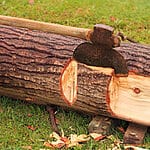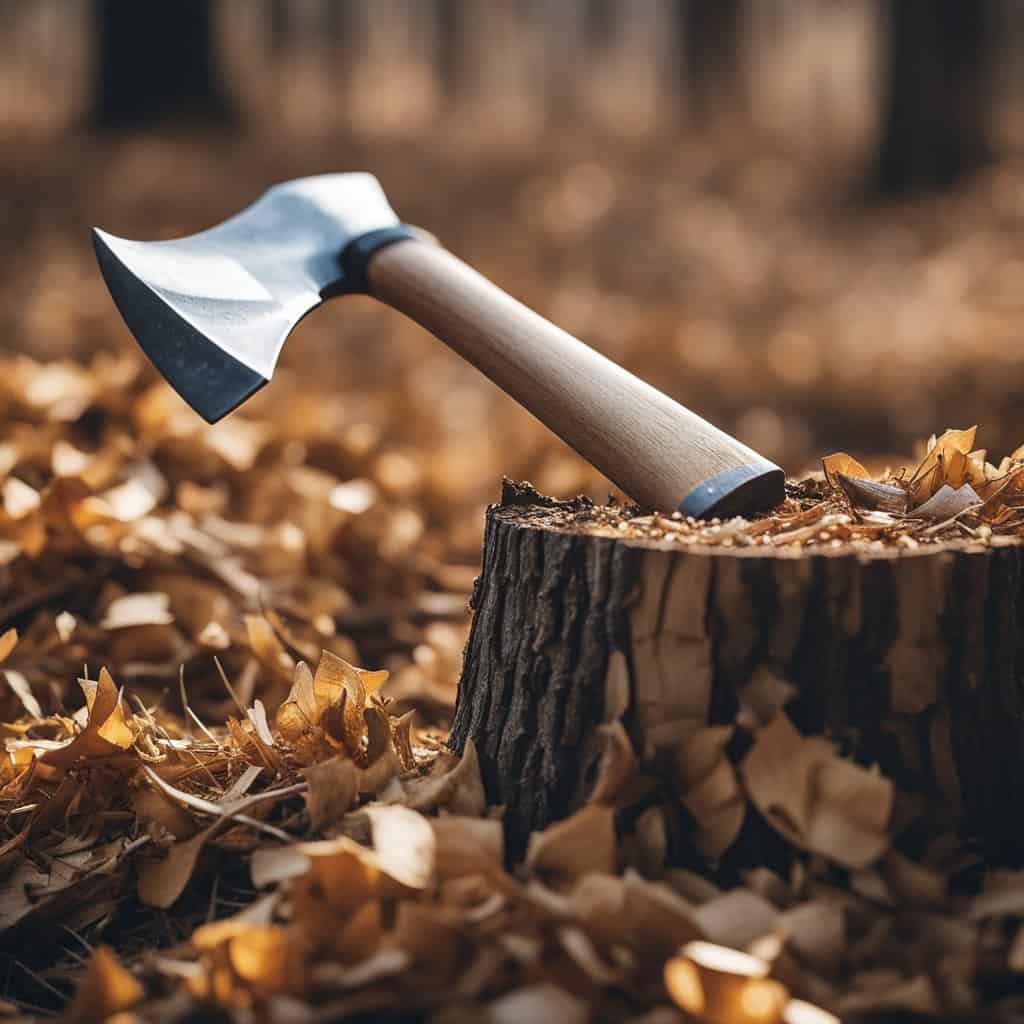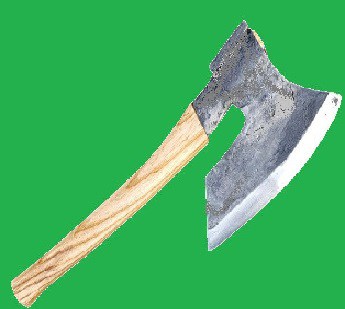Viking axes were the weapons of choice for many Norsemen during the Viking Age. These sturdy and deadly tools could be used for combat and utility purposes, making them essential for any self-respecting Viking warrior. With their distinctive designs, Viking axes are now some of the most popular collectible items among history buffs and weapon enthusiasts.
Table of Contents
What is a Viking Axe?
Viking axes were more than just weapons – they were also tools used for everyday tasks. The haft of a Viking axe is usually made from wood, although some have been found with metal hafts. The blades were also traditionally made from iron or steel and could be either single-edged or double-edged. There were axes with a blunt edge on one side for chopping wood, while the other side was sharpened for use in combat. Some axes were explicitly designed for throwing, with long handles and weighted heads, making them deadly projectile weapons. Then the Vikings often added decorative inlays on the blade or haft, and many were beautifully engraved.
Viking axes came in various sizes and shapes, depending on their purpose. Battleaxes were large and heavy and designed for hacking through enemy armour. Throwing axes were smaller and lighter, with longer handles that allowed them to be hurled with great accuracy. Finally, utility axes, which were smaller than the throwing axe, were used for tasks like chopping wood.
Viking Axes in Combat
Viking axes were used in both close-quarters combat and as projectile weapons. In close quarters, the weight and design of the axe made it excellent for hacking through enemy shields and armour. The long handles of some Viking axes also allowed them to be used as spears, giving the user a longer reach than their opponent.
Throwing axes were also popular in combat, as they could be thrown with great accuracy and force. These smaller axes could penetrate enemy armour at a distance and were often used in surprise attacks with great success.
Design & Material of Viking Axes – Why They Were So Effective
One of the reasons Viking axes were so effective as weapons was that they could be created from various materials, wood, steel, and iron. The best Viking axes at the time were made from high-quality iron or steel, making them extremely tough and durable. However, even lower-quality wooden Viking axes were still effective weapons, as they could penetrate the leather armour most warriors wore.
The design of Viking axes was also critical to their effectiveness. Most battleaxes had a wide, curved blade that was excellent for chopping through enemy shields and armour. The weight of the axe head also meant that it could deal a devastating blow, even if it didn’t penetrate through the armour. The shape of the axe head also made it difficult for an opponent to block the weapon, which meant that Viking axes were often able to find their mark, even against well-armoured opponents.
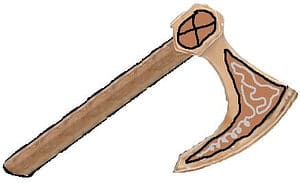
Advantages of Steel Axes Over Wooden Axes
While wooden axes were indeed effective weapons, they had several drawbacks. First, they were not as durable as steel axes and would often break or splinter after a few hard blows. Wooden axes also dulled more quickly than steel ones and needed to be replaced more frequently.
Another disadvantage of wooden axes is that they could catch fire in combat. An axe that catches fire is a serious problem, as it would not only put the axe-wielder at a disadvantage but could also spread the fire to nearby warriors. Steel axes did not have these problems and were thus much more effective weapons. They were also easier to sharpen, which meant they could be kept in good condition for longer.
Types of Viking Axes
The most famous Viking axe is the Dane axe, a large battleaxe with a distinctive curved blade. The Dane axe is similar to the bearded axe but differs because it has a longer and narrower blade, making it more suitable for thrusting attacks rather than chopping.
Dane axes were named after the Vikings of Denmark, who were primarily known for their skill in using this weapon. Dane axes were often used in pairs and allowed the user to hack at an opponent from both sides, making them especially deadly in close-quarters combat.
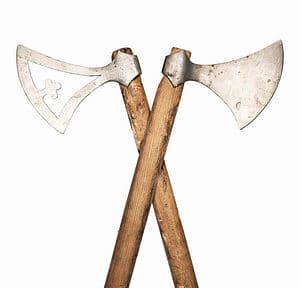
Another popular type of Viking axe is the bearded axe. The name came about from the fact that the bottom edge of the blade extends below the level of the haft, giving it a “bearded” appearance. The bearded axe, also known as a Skeggox, is perhaps the most iconic type of Viking axe. Bearded axes were usually wielded with two hands and could easily decapitate an opponent with a single blow.
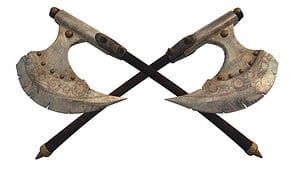
The Francisca axe is a throwing axe that the Franks used, a Germanic people who lived in what is now France. It is distinguished by its heavy weight and broad, curved blade. Francisca axes were primarily known for their accuracy and were designed to be thrown with great force and precision, causing severe damage on impact, which made it an excellent weapon for taking out enemy warriors at a distance.
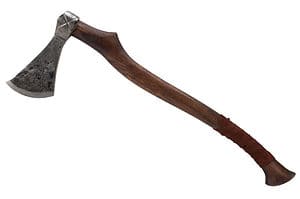
The Mammen Axe is a type of Viking axe used in the Mammen style of warfare known as melee combat or unorganized hand-to-hand close-up combat. The Mammen axe is distinguished by its broad, flat blade, which makes it ideal for crushing enemy skulls and one of the most feared weapons of the Viking age.
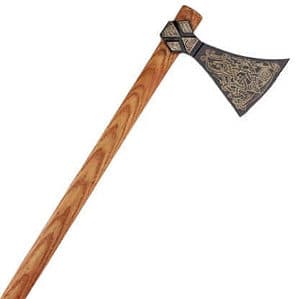
The Viking age was a time of significant advances in weapons technology, and the Viking axe was one of the most important weapons of this period. The introduction of steel axes transformed warfare and made the Vikings some of the most feared warriors of their time.
Use Of A Viking Axe Today
While the Viking axe is no longer used in warfare, it has remained an important part of Nordic culture and is still used in many traditional festivals and ceremonies, such as weddings and funerals. It is also a famous symbol of Nordic identity and can be seen in many public places, such as government buildings and monuments. The Viking axe is also sometimes used as a symbol of strength and power, and the axe symbol can be seen in many bodybuilding competitions.
The Viking axe is a popular tool for woodworking and carpentry. Its broad blade makes it ideal for chopping wood, and its heavy weight makes it perfect for driving nails into lumber. Today the Viking axe is used in many different types of construction, including the building of log cabins and other structures. If your curious about knowing whether an axe or hatchet is better for cutting wood you may be interested in the article Axes vs. Hatchets, Which Is Better?
The tomahawk axe is a type of Viking axe that is still used today. It is similar to the Francisca axe but is smaller and lighter, making it easier to throw and more effective as a throwing weapon. There are axe-throwing competitions that utilize the tomahawk axe, and it is also a popular tool for camping and hiking.



